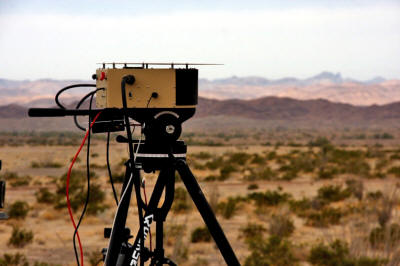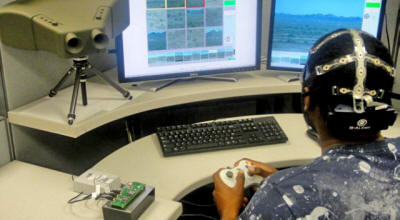|
After more than four years of research, DARPA has created a system that successfully combines,
Called the Cognitive Technology Threat Warning System (CT2WS), it will be used in a combat setting to significantly improve the US Army’s threat detection capabilities.
There are two discrete parts to the system:
Images from the camera are fed into the computer system, which runs cognitive visual processing algorithms to detect possible threats (enemy combatants, sniper nests, IEDs).
These possible threats are then shown to a soldier whose brain then works out if they’re real threats - or a false alarm (a tree branch, a shadow thrown by an overheard bird).
The soldier is linked into the computer system via an EEG (electroencephalogram) brain-computer interface that continually scans his brains for P300 responses.
As we’ve discussed previously (see Hackers backdoor the human brain), a P300 response is triggered when your brain recognizes something important. This might be a face of someone you know or the glint of a sniper scope - it doesn’t matter.
P300 responses are very reliable and can even be triggered subconsciously.
In short, CT2WS taps the human brain’s unsurpassed ability to recognize objects. In testing, the 120-megapixel camera, combined with the computer vision algorithms, generated 810 false alarms per hour; with a human operator strapped into the EEG, that drops down to just five false alarms per hour.
The human brain is surprisingly fast, too:
Moving forward, once our computers are suitably power efficient (or there’s a breakthrough in battery efficiency), the ultimate goal is to create binoculars or head-up displays (HUD) with threat detection technology built in.
It’s very tiring for a soldier to be constantly on the lookout for threats - but such a system could monitor the surroundings, and then flash up images of potential threats for the soldier to act upon, significantly lowering his workload.
With a large enough sensor and the right lenses, such a system could allow the soldier to see for miles in every direction.
|


